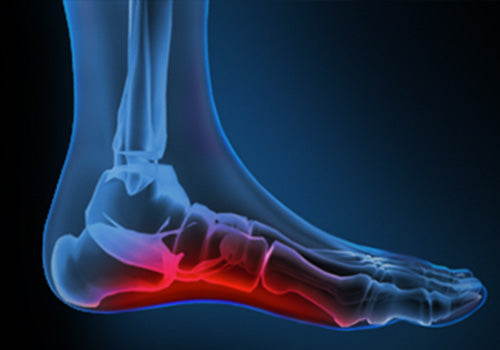Definition
The term arch pain (often referred to as arch strain) refers to inflammation and/or a burning sensation at the arch of the foot.
Cause
There are many different factors that can cause arch pain. A structural imbalance or an injury to the foot can often be the direct cause. However, most frequently the cause is a common condition called Plantar Fasciitis. The plantar fascia is a broad band of fibrous tissue located along the bottom surface of the foot that runs from the heel to the forefoot. Excessive stretching of the plantar fascia, usually due to over-pronation (flat feet), causes plantar fasciitis. The inflammation caused by the plantar fascia being stretched away from the calcaneus (heel bone) often leads to pain in the heel and arch areas. The pain is often extreme in the morning when an individual first gets out of bed or after a prolonged period of rest. If this condition is left untreated and strain on the longitudinal arch continues, a bony protrusion may develop, known as a heel spur. It is important to treat the condition promptly before it worsens.
Treatment and Prevention
This is a common foot condition that often can be easily treated. If you suffer from arch pain avoid high-heeled shoes whenever possible. Try to choose footwear with a reasonable heel, soft uppers, shock-absorbing soles, and proper arch support. When the arch pain is pronation-related (flat feet), an orthotic designed with a medial heel post and proper arch support is recommended for treating the condition. This type of orthotic will help control over-pronation, support the arch, and provide the necessary relief.
If the problem persists, consult your foot doctor.

Share:
Achilles Tendonitis
Bunions